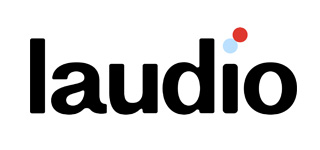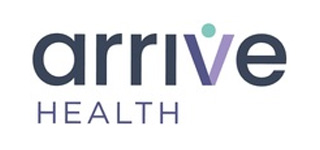Aaron Sheedy is COO at Xealth, a Seattle-based digital health startup that makes it easier for health systems to integrate digital care vendors into their EHR platforms, from which clinicians can prescribe and monitor those vendors’ content, apps, devices and other services.
Xealth spun out of Renton, Wash.-based Providence St. Joseph Health in 2017. The startup closed its $14 million Series A financing round in June of this year, with investors including Providence Ventures, Atrium Health, Cleveland Clinic, MemorialCare Innovation Fund, University of Pittsburgh Medical Center and Froedtert & the Medical College of Wisconsin network.
In an interview with Becker’s, Mr. Sheedy described Xealth’s mission to streamline the entire care delivery process, end-to-end, by giving providers tools that will not only improve outcomes, but also lessen their own workloads. “We’re seeking out moments like that — when can we actually help doctors be better at what they do?” he said.
Here, he discusses that mission in further detail, as well as how spinning out of a large, diverse health system — and observing its inner workings — has helped Xealth stand out in a crowded field of health tech startups.
Editor’s note: Responses have been lightly edited for length and clarity.
Question: How did starting at Providence St. Joseph influence Xealth’s offerings and overall business strategy?
Aaron Sheedy: Hugely. At the beginning, what was great was we were able to sit with the clinicians, IT and IS folks, folks in the C-suite, folks in the population health department and, equally as important, clinicians, clinician leaders, frontline staff, the CNIO and the CNO, and they helped us understand the challenges around digital health as an entire category.
It started with basic questions, like asking why physicians don’t email patients at the very start of the exchange. They said, “I have so few people who are actually engaged with our patient portal; it’s not even worth it. I might as well just go straight to the analog phone call or send a piece of paper.” Those types of discussions were the beginnings of uncovering the actual technological barriers to patients being engaged digitally with their health and physicians being able to engage digitally with assets that’ll help people with their health.
What we learned is that those problems all were in and of themselves blockers to digital health getting deployed. We realized it wasn’t just one thing that, when solved, would unlock all these other issues. It was actually multiple separate things we had to attack simultaneously with technology and with an understanding of how people actually work in the hospital.
We had all sorts of concepts about what we were going to do in healthcare, and it turned out almost all of them were wrong. They just weren’t good ideas; they didn’t intersect with the health system in the way we thought they would. I’m really glad we didn’t start a company outside the healthcare system, because I think we would’ve made a lot of mistakes that a lot of other startups have made.
Q: Did launching at a health system change how you approach other health systems?
AS: Most of it is just learning that you get as you slowly understand how the ecosystem functions. Early on, we would show up at the front door of a hospital or health system showing off all these really cool apps and solutions we’ve integrated into Xealth, expecting them to be just as excited about deploying them, but they wouldn’t be very enthusiastic.
Now, though, using the Xealth user group for our hospital system customers, we can start doing best practices and walk people through, for example, what maternity looks like at UPMC, and then other folks from other systems can listen and learn and try it out themselves. We’re trying to synthesize the best of each of our systems to try to move everyone along a little faster. It’s a little different from where we started, but that has been a fun journey. We used to open with, ‘Don’t ask us what to do — we’re just the Swipe guys!’ And now they actually do care what we have to say.
Another very critical area for us has been to sit down with frontline staff. They are our secret champions inside these health systems helping make these changes. If you don’t understand the workflow of the people that you’re trying to design it for, then you’re just as tone-deaf as anyone else in the space. If we can get them to riff back to us what their day looks like, then we can uncover all sorts of areas and hidden costs and go make a big difference.
Q: Would you say, then, that changing the mindset to a more consumer-focused one is the biggest challenge facing hospitals and health systems implementing new technology?
AS: I think they’re naturally inclined to want to be consumer-facing. They want to have consumer-centric care, but they’re not getting paid to be consumer-centric. They’re getting paid to get you in for the visit and then get you out. That’s a sad state of affairs and it does not give the group of people in this country who are most able to care for people the tools and the structure to actually do it well. We’re making them assembly-line patients through as fast as possible.
What Xealth would love to do is realign the decision-making process, where the hospital will still decide what to do for a patient, but the reimbursement structure for what to do for that patient would come out of the payer side. Right now, everybody in the ecosystem thinks hospitals should pay for end-to-end digital tools and solutions, but our long-term goal is to get that all integrated and create a very efficient setup, and then put it on the folks who are most at risk for each patient, like lawyers, insurance companies and CMS, who should find ways to incentivize the health systems to make the right long-term decisions for patients. That would be a very easy billing event.
What I would love to have happen in the next few years, as Xealth matures and gets deployed at 20 and then 30 hospital systems, is to work with health systems and the top five insurance companies and say, “Stop micromanaging hospital systems. Just pay for stuff that improves long-term outcomes.” If we can find ways to actually realign the incentives of what it means to provide patient care, then I think we’re off to a really good start.
Q: Besides that huge culture change, what are some more technical obstacles that hospitals and health systems face when they’re implementing new digital tools like Xealth?
AS: The EHRs were not designed for this. They’re designed to bill for things that happen to you in the hospital. That’s a tremendously complicated set of software, but the tradeoff is that it is very hard to have that software interface with the outside world. That’s just one challenge: The fundamental tools don’t exist. You have to create a way for this data to flow in and out seamlessly. All of the HIE work that people are doing and all the ONC’s regulation around the 21st Century Cures Act and this broad, swelling demand for data interoperability, that’s all going to help this stuff and make it work better.
Another challenge is that changing behaviors of super busy people is not easy. If I go into a health system or a clinical group and offer up one extra thing for the frontline staff to do, my chances of success are in the single digits. It’s much more effective instead to combine existing time-consuming processes and offer them one click instead of two minutes’ worth of work. That’s the kind of click they can get behind.
We are a very tiny part of that value exchange, but if we can get little small wins like that across service line leadership and service line operational staff in various systems across the U.S. we can maybe start to make a little difference there. It’s not just about the digital health ecosystem. At the end of that ecosystem is a patient who’s actually getting better care and a clinical staff member whose job just got easier.



